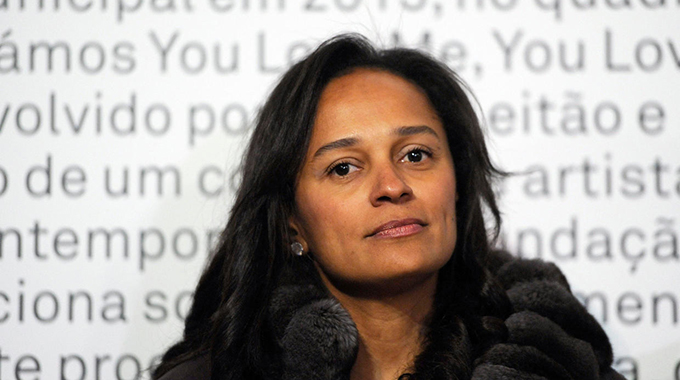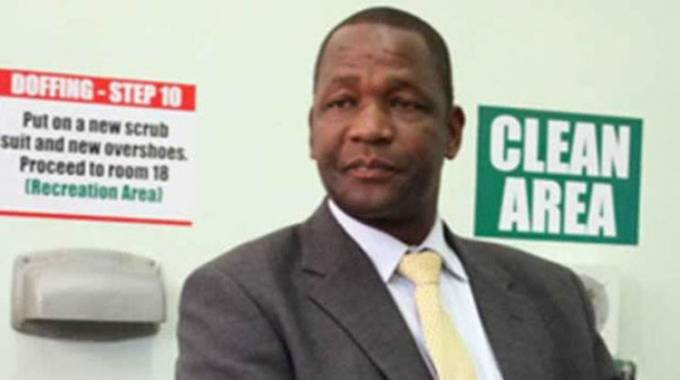Hidden dimensions of violence against people with disabilities

Lovemore Rambiyawo, Correspondent
As sophisticated and advanced as modern civilisation is, it has yet to acknowledge, or come to terms with, the hidden dimensions of violence by society against the over 1 billion persons with disabilities (PWDs) globally.
Closer to home, 2,6 million PWDs in Zimbabwe compound the social exclusion of the world’s largest minority from every sphere of life.
Although violence is widely acknowledged as an extreme form of aggression such as assault, rape or murder, there is a subtle violence that is insidious and infinitely more enduring and socially devastating.
This is mainly because it is tacitly condoned in society: systemic violence grounded on negative attitudes and resultant society-driven stigma and discrimination against PWDs.
The social exclusion of PWDs is caused by attitudinal barriers (society’s negative attitudes against PWDS), environmental barriers (inaccessible buildings and information in inaccessible formats for PWDs), and institutional barriers (lack of disability-friendly policies and legislation, policies and practices which discriminate against PWDs, lack of service provision, and inadequate and inappropriate service delivery for PWDs).
The most formidable barrier, however, is attitudinal barriers, which serve to legitimise the trampling upon of the rights of PWDs with impunity; human rights deprivations across the entire social, economic, political and cultural spectrum; environmental barriers; and institutional barriers.
This form of violence is compounded by overt acts of violence against children with disabilities and gender-based violence against women with disabilities, making it an all-encompassing kind of violence from which there is no escape.
The World Report on Violence against Children (2006), commissioned by the UN Secretary-General, notes that children with disabilities are at heightened risk of violence for a variety of reasons, ranging from deeply ingrained cultural prejudices to the higher emotional, physical, economic, and social demands that a child’s disability can place on his or her family.
Women with disabilities experience a wider range of violence including emotional, physical and sexual.
Deprivation of human rights, social exclusion of PWDs and consequent lack of access to essential services, starts from birth and continues unabated through their entire life cycle.
There is a convergence of research and societal practice that children with disabilities are often denied their right to life — too often, their births are not registered, they are not recorded in census data, and they are hidden away in back rooms or abandoned in institutions, with poverty, ignorance, superstition, culture and prejudice combining to deny the humanity of a disabled child and legitimise a wide range of horrific rights abuses.
The Guidelines for action on promoting the rights of disabled children (2003) sums up the unique deprivations of children with disabilities by noting that a disabled child is viewed as other, lesser, a burden, a punishment or a curse.
Disabled children will face rejection within the family, the community and their peers.
They will be disproportionately vulnerable to poverty, physical and sexual violence, lack of access to healthcare, emotional abuse and neglect.
Children with disabilities are uniquely vulnerable to abandonment, which is the first form of violence against the child.
A 2012 research study on abandonment in Zimbabwe by the disability umbrella body found out that fully 94,4 percent of children with disabilities in care institutions had been abandoned by both parents and 72,2 percent by their fathers.
More often than not, these cases go unreported.
According to the World Report on disability (2011), children with disabilities are less likely to attend school than non-disabled children.
A number of factors combine to ensure low educational outcomes for children with disabilities.
These include negative attitudes by the parents who see little utility in educating the child with disability; lack of assistive devices such as wheelchairs, crutches, hearing aids and white canes that would enhance mobility for the child with disability; long distances from school; teachers not fully equipped to deal with the special needs of children with disabilities; children with disabilities being subjected to taunts and ridicule on their way to school; and schools that are apprehensive about enrolling children with disabilities.
This prevents children with disabilities from accessing vital educational opportunities, which would subsequently enable them to climb out of poverty through employment and other economic opportunities.
The World Report on disability further notes that half of people with disabilities cannot afford healthcare, compared to a third of non-disabled people.
This is attributed to high poverty levels among people with disabilities (the World Report on disability says that PWDs make up 20 percent of the poorest in the world); negative attitudes by healthcare workers against PWDs who often taunt and ridicule PWDs; and, physical inaccessibility of medical facilities. This is compounded by long distances that PWDs have to endure to access facilities, especially in rural areas.
The arena of work and employment is a veritable minefield of exclusionary practices for PWDs.
The World Report on disability notes that PWDs are more likely to be unemployed than non-disabled people. The majority of employers make no deliberate effort to include PWDs in their employment and work structures.
PWDS are discriminated against in conditions of recruitment, hiring and employment, continuance of employment, career advancement and safe and healthy working conditions.
Employment adverts do not encourage PWDs to also apply.
In the event that PWDs are recruited, they would be given lower remuneration for work of equal value than their non-disabled counterparts.
PWDs continue to be dismissed from employment when they acquire a disability at work instead of ensuring retention by reassigning them to other areas of work where they can still remain useful.
Mechanisms for protection from harassment; redress of grievances; exercise of their labour and trade union rights on an equal basis with others; and, effective access to general technical and vocational guidance programmes, placement services and vocational and continuing training.
Often, there are no mechanisms to promote employment opportunities and career advancement for PWDs in the labour market, as well as assistance in finding, obtaining, maintaining and returning to employment; promote opportunities for self-employment, entrepreneurship, the development of cooperatives and starting one’s own business; promote employment of PWDs in the public sector, and in the private sector through appropriate policies and measures, which may include affirmative action programmes, incentives and other measures; provide reasonable accommodation for PWDs in the workplace; promote the acquisition by PWDs of work experience in the open labour market; and; promote vocational and professional rehabilitation, job retention and return-to-work programmes for PWDs.
In the arena of political participation, negative attitudes work to ensure underrepresentation of PWDs in Government, including Parliament and in political party structures; they are often excluded from decision-making processes at all levels; denied the right to vote by secret ballot in elections and public referendums without intimidation, and to stand for elections, to effectively hold office and perform all public functions at all levels of Government.
In response to the generalised social exclusion of PWDs in all spheres of life, exercised with impunity globally, the United Nations in 2006 introduced the United Nations Convention on the Rights of Persons with Disabilities (CRPD) whose purpose is to promote, protect and ensure full and equal enjoyment of all human rights and fundamental freedoms by all PWDs and to promote respect for their inherent dignity.
The onus is on all stakeholders to act collaboratively, collectively and inclusively to ensure the realisation of a “society for all” in the 21st Century, a violation-free society in which PWDs participate fully and effectively to the social, economic, political and cultural development of all nations.
Lovemore Rambiyawo, who is physically-impaired, is Acting Executive Director of National Association of Societies for the Care of the Handicapped (NASCOH), an umbrella body to 70 disability organisations in Zimbabwe. The writer can be reached at: [email protected]; website: www.nascoh.org.zw









Comments